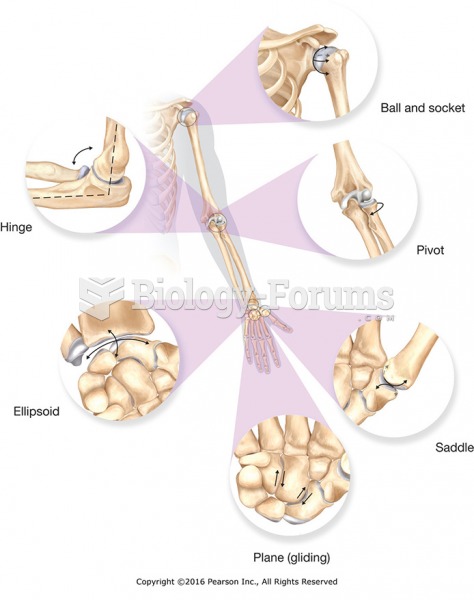Answer to Question 1
Blood-injury-injection phobias demonstrate a fear of blood, physical injury, and needles. Situational phobias address fears of a particular situation such as riding on public transportation. Natural environmental phobias are fears of natural events such as tornadoes, hurricanes, thunderstorms, etc. Animal phobias consist of fear of animals. Other is everything that does not fit into any of the above categories.
Phobias may be acquired in several different ways. One way is through classical conditioning. We may also learn fears vicariously (seeing someone else have a traumatic experience). Sometimes just being warned repeatedly about a potential danger is sufficient to develop a phobia.
Finally, it appears that several things have to take place to develop a phobia. First, some form of traumatic conditioning experience. Second, fear develops more easily if we are prepared to fear, i.e., inherently dangerous situations. Third, one must be susceptible to developing anxiety that the event will happen again.
NOTES: NEW
Answer to Question 2
Agoraphobia is fear and avoidance of situations in which a person would feel unsafe. These situations include those from which it would be hard or embarrassing to escape to get home or to a hospital. In severe cases, people with agoraphobia are unable to leave the house, sometimes for years on end. Almost all agoraphobic avoidance behavior is simply a complication of severe, unexpected panic attacks. Simply put, if you have had unexpected panic attacks and are afraid you may have another one, you want to be in a safe place or at least with a safe person who knows what you are experiencing if another attack occurs so that you can quickly get to a hospital or at least go into your bedroom and lie down (the home is usually a safe place). We know that anxiety is diminished for individuals with agoraphobia if they think a location or person is safe, even if there is nothing effective the person could do if something did happen. For these reasons, when agoraphobic individualsdo venture outside their homes, they always plan for rapid escape (for example, by sitting near the door).
Most patients with severe agoraphobic avoidance (and some with little) also display another cluster of avoidant behaviors that we call interoceptive avoidance, or avoidance of internal physical sensations. These behaviors involve removing yourself from situations or activities that might produce the physiological arousal that somehow resembles the beginnings of a panic attack. Some patients might avoid exercise because it produces increased cardiovascular activity or faster respiration that reminds them of panic attacks and makes them think one might be beginning. Other patients might avoid sauna baths or any rooms in which they might perspire. Psychopathologists are beginning to recognize that this cluster of avoidance behaviors is every bit as important as more classical agoraphobic avoidance.







